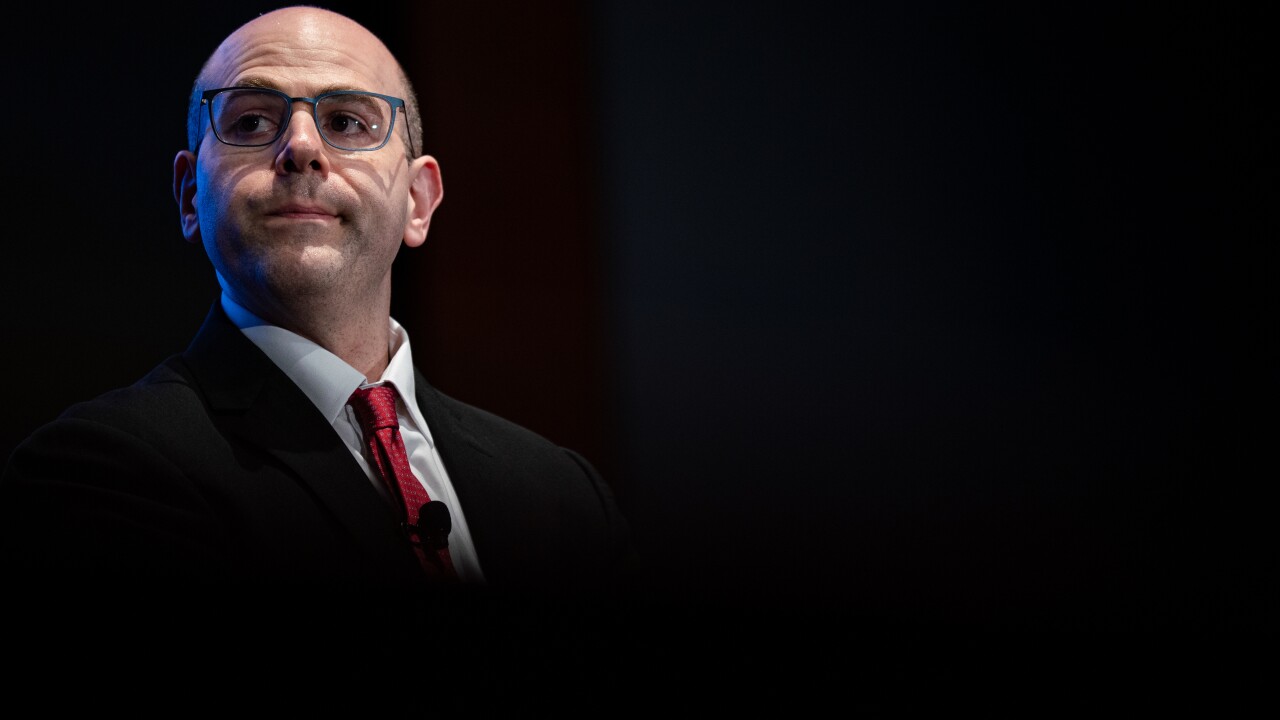While Germany's Wirecard AG in recent years has been steadily racking up a deep portfolio of payments technology fused with banking services through a white-label approach, it has also quietly established a global business through acquisition.
Beginning with a strong base in Europe, Wirecard has advanced its reach via key acquisitions around the world. With its
Quite a few of the specific solutions Wirecard has devised for corporations hinge on prepaid cards. The company will further embed that approach into innovative payment solutions, depending on the use case, according to Burkhard Ley, CFO at Wirecard.
But cards in general are evolving to become omnichannel payment instruments, with virtual and digital cards increasingly taking hold in business-to-business or fully digitized solutions, said Susanne Steidl, Wirecard’s vice president of issuing solutions.

“Some of the most interesting payment innovations we’re seeing recently are driven by a shift from plastic to virtual solutions, and because the omnichannel calls for more mobile and virtual solutions, we expect to see more product demand emerging around this,” Steidl said.
An ambitious growth plan calls for Wirecard over the next few years to become a one-stop-shop for merchants serving international markets in travel, services and digital goods by providing its own blend of issuing, acquiring and other payments processing solutions through a single channel, according to Ley.
“Many merchants operating in different global regions currently have a different processor relationship in every country, and they’d like to improve efficiency by working with one provider, which we can do,” Ley said.
The Citi deal closed in March and this week Wirecard announced one of its first new initiatives since the Citi transaction: A prepaid Visa card that delivers
“We are now on all continents, and with acquiring and issuing, plus banking services, we intend to offer a complete value chain, outsourcing issuing and acquiring services to customers on a global basis,” Ley said.
Merchants also are looking for ways to solve challenges around omnichannel commerce, and Wirecard's solutions supporting online, mobile and virtual payments, along with loyalty elements, can fuel this trend, according to Ley.
A prime example is Wirecard’s partnership with China’s
“We can offer a complete solution to global merchants looking to outsource technology, risk management or banking services,” Ley said, noting that Wirecard defines itself as a technology provider first, using its own bank operations to devise customized, white-label solutions.
“Our core value doesn’t come from banking services per se; the real innovation comes from our Internet-based technology,” Ley said.

While Wirecard’s closest competitors include WorldPay in Europe and Global Payments in the U.S., analysts agree most companies aren’t doing exactly what Wirecard is doing.
“Wirecard essentially is a payments firm that powers many other brands through acquiring, issuing and moving money, and there are few that really operate on a global basis now like Wirecard,” said David Parker, CEO of London-based Polymath Consulting. “From a global servicing perspective around payments, and its white-label approach, Wirecard is becoming almost unique in what it can offer.”
Laying the groundwork for what has essentially become a global network has taken nearly 20 years.
Wirecard got its start in Germany in 1999 on a much smaller scale, initially enabling online payments within Germany and continental Europe.
As volume grew, Wirecard in 2006 added a fully licensed bank in Germany, and obtained licenses with Mastercard, Visa, American Express and Diners Club. More recently Alipay and China UnionPay joined that list, connecting Wirecard’s technology with a broad array of international banking and payment solutions.
By 2009, Wirecard had become a significant player in the European market and the company began looking beyond the region for further growth.
“We saw that big international merchants like airlines and other travel companies—and even technology companies in places like Silicon Valley—could benefit from consolidating their payment partner relationships, instead of needing a partner in every region. That’s why we decided to become a global player, though it was a long process,” Ley said.
Wirecard’s first big investment outside of Europe was in Asia in 2010, and the company has steadily expanded its footprint through other acquisitions in major international markets, including
The final piece of the international puzzle came last year when Wirecard purchased Citigroup’s institutional prepaid card business in its entirety, giving Wirecard its first foothold in North America.
With Citi’s 100-person operation in Conshohocken, Penn., Wirecard assumed more than 2,500 corporate prepaid card programs including incentive, compensation and corporate disbursement cards for industries including telecommunications, health care, consumer goods and the public sector.
The timing could be auspicious, as many merchants now are eyeing their strategies to address the emerging omnichannel.
“Merchants historically had to get different partners in different geographic regions for their e-commerce or in-store operations, but increasingly .... they need to consolidate operations from online to mobile to the point of sale, and this is where we see big opportunities for our technology platform,” Ley said.
Wirecard’s immediate roadmap calls for driving organic growth by enhancing existing operations and services. To that end, Wirecard’s overall headcount has nearly doubled over the last two years to almost 4,000.
With the Citi prepaid acquisition, Wirecard plans to drive revenue growth by tapping the “wider spectrum” of payments technology services Wirecard can supply to existing prepaid card programs, Ley said. “We’re going to keep a lot of things in place at the front end, and optimize everything we can on the back end.”
Capitalizing on the opportunity to convert many point of sale and cash payment operations to digital channels through online and mobile payments for various clients, Wirecard expects to boost its overall transaction volume by about 20% over the next three years, Ley said. By 2020, Wirecard hopes to reach $2.5 billion (euro) in revenue from worldwide operations.
Meanwhile, the company is keeping the door open to additional M&A opportunities that may arise, Ley said.
“We will make acquisitions if they make sense, and we’re looking at all regions,” he said.





